There's Nothing New Under The Sun – Test Drive Reviews of Porsche's Entry-Level Sports Cars

Depending on the type of mood in which I find myself after waking, as well as the type of mood in which I find my car after its waking, I vacillate between being buried in the masterpiece or selling the lemon in short order. Recently my relationship with my Porsche 911 has been somewhat strained. A relatively minor issue prompted my most recent trip to the dealer, yet I was set to depart with another four-figure bill. In a moment of weakness I strolled over to the other side of the dealer and perused their new offerings, in particular the updated 981 Boxster and Cayman twins. Perhaps relatively predictable depreciation losses would be preferable to the Russian roulette of ongoing high-dollar maintenance.
Despite being on the youthful side – I’m 24 and look younger – I had my own Porsche in tow, and I was wearing a suit, so booking a test drive of both a Boxster S and a Cayman S proved easy. Plus, I had recently received a serendipitous fortune cookie, so I had to do some (window) shopping. Despite being an avid Porschephile, I have enjoyed minimal exposure to the more modern product offerings. It is a common tenet among many serious Porsche owners to maintain without irony that whatever car they happen to own at the time is the absolute pinnacle of the company’s capabilities, with the ensuing model years representing a fundamental sea change in Porsche’s values, fueled by cynical profit pursuit and the triumph of marketing and accounting over engineering, culminating in inexorable decline. Porsche themselves have even poked fun at this attitude.
NB: Had I been able to locate a digital copy of the above poster with sufficient resolution, you would be able to read the following in the text pane to the right – “255,000 people have an older one in their garage and could talk to you for hours about why theirs is the best year and although we are deeply proud of our heritage we maintain no loyalties to any particular vintage and recommend a brief yet thorough test drive of the newest model available. (Which, incidentally, now has a top speed of 168 miles per hour.)”
The now-deposed 997 owners express reservations over the electrically assisted steering on the latest and greatest 991, whereas the 993 owners bemoan the loss of the air-cooled engine and the ur-911’s original footprint and cabin layout, the 964 owners mourn the upright front fenders that allowed the driver to see how much the car understeered (which was worst just before the car snapped to oversteer!), the G-series owners insist that something was lost with the end of the torsion bar era … all the way back to the 356 owners who are still unconvinced by this whole “911” fad. Meanwhile they were all sneering at those who were stuck pushing around a front-engined 924,944, 968, or 928, as well as all Boxster and Cayman variants. When viewed objectively and dispassionately, it’s a facile contention, and it reminds me of similar remarks made at my college graduation; a relatively obscure and stubbornly conservative liberal arts school situated in rural Virginia, my alma mater invariably produces graduates who express a tinge of pity for anyone who attended the school after they did, confident that the experience is diluted evermore each year, and the essence of the place is endangered.
And what about the essence of Porsche? Is it endangered? Do they still build true sports cars, and is the 981 stable the rightful inheritor of the air-cooled cars’ legacy? Most importantly, could it replace my 993? Of course I had to see for myself, but I received plenty of unsolicited advice from family friends and coworkers. One family friend volunteered that the new Boxster was actually a surprisingly handsome car, representing an improvement over the 986 and 987 cars’ “bar of soap silhouette that [he] would be embarrassed to be seen in.” A coworker who allegedly maintains a businesslike relationship with rapper Rick Ross, the “Hottest MC in the Game” and a confirmed 911 enthusiast, promised to leverage his professional network and urge the Teflon Don to talk me down from the precipitous proverbial ledge of trading my 911 for a “chick car.” Concurrently, another colleague warned me that the primary determinant of vehicular desirability was the presence of “sick fuckin’ technology,” helpfully suggesting the purchase of an Acura ILX instead. Ironically, the latter colleague also professes a meaningful personal connection with RO$$, so I’m anticipating a phone call from a blocked number any day now. Failing that, I’ll look for Ricky Rozay at the next Porsche Club of America ice cream social.
The Boxster S I drove was resplendent in white. While the new car undoubtedly looks more muscular, a bit like the last decade’s Carrera GT supercar if you squint a little, I don’t think the refrigerator hue will do the soft top car many favors as it ages.
Sure it looks good now but so did the new pair of tennis shoes I received each school year as a kid, only to look tired and worn before the first snowfall. Or perhaps the new Boxsters will age as gracefully as a bathtub 356, who knows? I do know that I prefer the external aesthetics of the new Cayman over the Boxster. The Cayman S tester was also white, but the more aggressive front fascia treatment and “Platinum Satin” wheels manifest a remarkable improvement in the car’s overall look. True, the cheaper to manufacture coupe will cost you a few grand more, and painting the wheels will tack on $845, but the krauts know how to extract the most from their patrons. Seriously, in Guards Red the Cayman S could wear a Pininfarina badge.
The interior of both cars is also a marked improvement over the previous generation, featuring superior materials – but certainly not standard full leather – and a rising central console that salespeople will tell you invokes the aforesaid Carrera GT. Personally, I think it more readily elicits comparisons with the Cayenne and Panamera breadwinners. The Boxster S was equipped with the good ol’ G50 6-speed manual…
… while the Cayman S featured the optional 7-speed PDK transmission and Sport Chrono Package, which total just over $5,000 combined.
I drove the Boxster S first. After releasing the strange emergency brake – an oversized button mounted down and to the left of the steering wheel – the controls struck me as typical Porsche, although all inputs felt a bit less substantial, requiring less heft than my tractor of a car. The sweet manual transmission featured a relatively light clutch with very gradual takeup – the polar opposite of my car – but it was familiar enough that I could heel-and-toe with ease after a few exploratory shifts. The 3.4 liter engine in the S-variant Boxster produces 315 hp, before running out of steam at 7800 rpm, with peak torque coming in at 266 lb-ft. Although the test drive was conducted two-up, the Boxster is considerably lighter than my 993, which left the factory with 282 hp and has doubtless sacrificed some of those stallions to the angels’ share – just like the finest Scottish exports – during the interim. Consequently, the Boxster felt considerably more rapid than my immediate frame of reference.
The Cayman S came next. I self-identify as a luddite who prefers the interaction of three pedals and a lever over the new-fangled dual clutch setup, but I did find the PDK quite beguiling. Apart from the humdrum efficiency gains afforded by the extra ratio, the PDK transmission – when coupled with Sport Chrono – makes a case for itself through enhanced straight line performance, far in excess of the 10 hp and 7 lb-ft incremental gains given to the Cayman S over the lump in the Boxster S. The PDK + Sport Chrono equation allows the driver to indulge in Launch Control, in which the computer optimizes all parameters and slingshots you forward from a dead stop. It’s great fun, and impossible not to inscribe a shit-eating-grin on the driver’s face, but it strikes me as a party trick you’d use to dazzle your friends. It’s an expensive gimmick, that’s all. As for a holistic assessment of PDK, it’s difficult for me to say whether it would still keep my attention on, say, my 247th day commuting to work without a clutch pedal.
Neither car I drove had the optional Porsche Sports Exhaust, but both provided a sufficient, if somewhat subdued soundtrack. Even the base setup emits little flourishes of overrun on downshifts, but they come across as synthetic, like Porsche by Pro Tools. Neither car I drove had the optional Porsche Active Suspension Management either, instead riding on the standard, passive dampers. That was fine, because the all-new chassis underpinning both 981s is a gem. The combination of enhanced stiffness – heightened more so by a modest yet perceptible margin in the hard top car – and wider tracks versus the precedent 987 cars gives the new cars tremendous composure when pressing on, and the mid-engined orientation endows the car with remarkable agility, particularly through sudden transitions. The Boxster and Cayman provided sufficient confidence to push the cars into gentle four-wheel drifts when space permitted, something I would not (intentionally) do in my car. In my 911 the script reads like this: pronounced, seemingly terminal understeer that rapidly gives way to exuberant oversteer, requiring four attentive limbs to control the car. It’s akin to the sensation you experience while being towed behind a speed boat that has changed course ahead of you – a spell in the predictable, placid doldrums before being fired across the wake. Conversely, the modern mid-engined cars slow everything down like Bullet Time in The Matrix, so even a ham-fisted hack feels like a virtuoso, selecting a slip angle from a continuous menu of options. It is deeply impressive, but perhaps a little less thrilling overall.
Braking has historically been a strong suit for Porsche, and the junior twins performed as expected in this regard, with reassuring retardation bolstered by well-judged sensitivity to modulation. Both cars had the standard steel brakes, identified by their red calipers, which more than sufficed in all situations encountered; the additional outlay for the bling yellow PCCB calipers is probably overkill, especially as both cars stickered well north of $70,000 already. So what about the steering?
The transition away from hydraulically-assisted steering toward electrically-assisted steering has incensed owners and fanbois alike. The new steering setup – which included the optional Power Steering Plus in both cars I drove – still allows the driver to position the car with both precision and accuracy, and it becomes weightier once at speed, just like the preceding cars. It performs all of the essential functions that a sports car’s helm should, but part of that Porsche essence is gone; there’s no more tugging, or writhing, or superfluous tactility. It’s all very efficient, and not in a good way. So what’s there to conclude? Keen readers already know that the 981 is a very good car, that it shades the primitive, old, air-cooled 911s in every objective measure.
Is there a banal, hackneyed platitude about “soul” to tie these observations and experiences together? No, the denouement is this: If you believe that Porsche is evolving through Sisyphean endeavor, gradually pushing the boulder up the mountain a bit more with every passing model year – a bit more power, a bit more economy, a bit more space – then you’ll find no surprises with the newest junior sports cars. Conversely, if you fear that Porsche is caught in entropic freefall, you won’t be surprised either, for there’s nothing new under the sun when it comes to Porsche, they stick to the script.
David Walton grew up in the North Georgia mountains before moving to Virginia to study Economics, Classics, and Natural Light at Washington and Lee University. Post-graduation, he returned to his home state to work in the financial services industry in Atlanta. A lifelong automotive enthusiast, particular interests include (old) Porsches and sports car racing.

David Walton grew up in the North Georgia mountains before moving to Virginia to study Economics, Classics, and Natural Light at Washington and Lee University. Post-graduation, he returned to his home state to work in the financial services industry in Atlanta. A lifelong automotive enthusiast, particular interests include (old) Porsches and sports car racing.
More by David Walton
Latest Car Reviews
Read moreLatest Product Reviews
Read moreRecent Comments
- Spectator Wild to me the US sent like $100B overseas for other peoples wars while we clammer over .1% of that money being used to promote EVs in our country.
- Spectator got a pic of that 27 inch screen? That sounds massive!
- MaintenanceCosts "And with ANY car, always budget for maintenance."The question is whether you have to budget a thousand bucks (or euro) a year, or a quarter of your income.
- FreedMike The NASCAR race was a dandy. That finish…
- EBFlex It’s ironic that the typical low IQ big government simps are all over this yet we’re completely silent when oil companies took massive losses during Covid. Funny how that’s fine but profits aren’t. These people have no idea how business works.

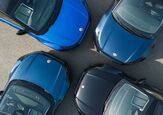
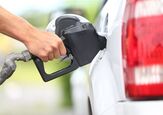


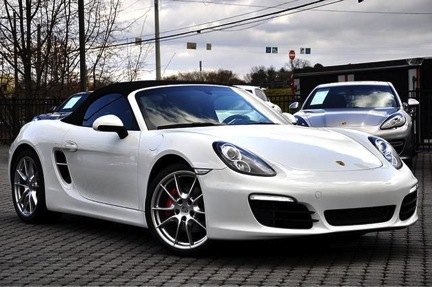















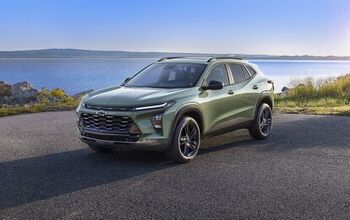









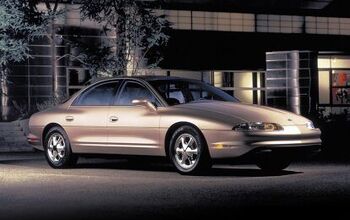






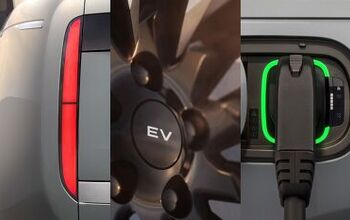
Comments
Join the conversation
I am totally jaded on cars now. Hate all cars under 200k if you have to restore them. buying old cars is really dumb if you are not a body work expert, the vast, vast majority of the time. If you are an expert, most of them drive new cars (check the parking lot of any body shop. You can take most pretty, shiny vintage cars put em up on the hoist and they are absolute garbage that require 1-3x their worth in rust repair, plus take a year to fix. A phyllo pastry of rust underneath just waiting for its new owner to finally do the work that was required 20 yrs ago. $25k can be spent and not even touch half of the car, a car worth maybe $40-55k in minty shape. This includes all porsches pre 2000's, alfa anything, jag, and basically every other good looking car made in the 70's sub $150k. You never get your money back and are always repairing them. better to get a cheap fun slow car (mx5) or just lease a new sh-t box Porsche and give it back after 3 yrs. cost per mile is outrageous on the old stuff sub $150k. Its all this internet s-it about oh the 964 is so good and its going up 10% in value over last yr and so on. $5k for pistons, if its electrical, motec- whats that going to cost? might as well fix the carpet up $1k, gotta get that glue off first right? $1k plus while we are in there, shocks could get some and those bushings have never been replaced... etc. etc. want an investment, buy a stock or a bond, or real estate. there is no resale premium for a brand new tranny or repairs on the retail price.
Another option to the entry level Porsches is a low mileage 2007-2008 (997.1) Turbo which you can get for about the same money as a new Cayman S. The advantage of this particular car is that it does not come with the potentially exploding engines of the 997.1 Carrera and Carrera S. It is also the most powerful 997.1 that is not track focused like the GT3. Downsides is the lack of a warranty and a lack of the latest interior, but you do get AWD and around 480 hp from the twin turbos. My guess is that the TT will be the less civilized, but more fun ride,